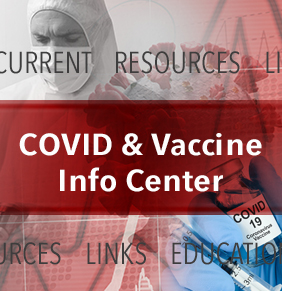
American Media, Just Stick to Your Job
Written by Denise Shick
Well, it’s official now: Jazz Jennings – born 18 years ago as Jared, with normally functioning male parts – now has female parts.
Despite a “complication” requiring a second procedure, Jazz is happy to tell her throngs of adoring fans that her surgery was a success and that now “I just get to be myself, be in the body that I’ve always wanted.”
In case you missed it somewhere along the way – as you worked those long, hard hours scraping up enough money to pay the rent and feed your family – in 2007, when Jared was just seven years old, he became the poster-child for childhood transgenderism. ABC’s Barbara Walters gave the young boy the platform he needed to become a wealthy celebrity – as a girl, Jazz. Many other media appearances soon followed. Jazz quickly became a star, with her own TV show.
Alluring attention
Imagine for a moment being seven years old and having adoring adult celebrities praise you – on TV, in front of millions of viewers – as a brave, pioneering role model. Imagine, while still transitioning out of baby teeth, having your own TV show – on the implied condition that you continue as the brave young transitioning pioneer. How would all that fame and adulation affect you? Who, whether child or adult, wouldn’t feed on such flattering attention?
Now imagine you are another seven- to twelve-year-old watching the Jazz interviews – or her own TV show. It must appear pretty captivating – pretty enticing. Is it possible that our media are feeding the surging childhood interest in transgenderism?
Studies on peer-group pressure
One study indicates it could be. “Rapid-onset gender dysphoria in adolescents and young adults: A study of parental reports“[i] by Dr. Lisa Littman and others at Brown University concluded in part:
It is plausible that ROGD represents an ego-syntonic maladaptive coping mechanism for some AYAs and that peer group and online influences may contribute to its development. It is unknown whether the gender dysphoria of rapid-onset gender dysphoria is temporary or likely to be long-term. The elevated number of friends per friendship group who became transgender-identified, the pattern of cluster outbreaks of transgender-identification in these friendship groups, the substantial percentage of friendship groups where the majority of the members became transgender-identified, and the peer group dynamics observed all serve to support the plausibility of social and peer contagion for ROGD.
In other words, “Look at all the attention Jazz is getting. That’s so cool!” Okay, that’s clearly in considerably more vernacular phrasing than anything seen in the Brown study. But kids don’t read those kinds of studies; they’re the subjects of such studies. And if you read between the lines, that appears to be what’s happening.
Before I get deluged with angry replies telling me the above-cited Brown study has been debunked, let me elaborate. Lisa Littman, who led the Brown University study, is assistant professor of the Practice of Behavioral and Social Sciences at Brown. I won’t take up your time by listing all her credentials. Please go see them for yourself. Prior to this study no one questioned Dr. Littman’s credentials or her objectivity. But these days the preferred method of operation in refuting studies is censorship rather than open debate. After heated objections from LGBTQ groups, Dr. Littman’s published study, previously posted on the Brown University website, has been removed.
According to “Development of Intra‐ and Intergroup Judgments in the Context of Moral and Social‐Conventional Norms,” a study led by University of Maryland developmental psychologist Melanie Killen: “Peer group pressure begins in elementary schools, as early as age nine. It’s what kids actually encounter there on any given day.” Kids, it turns out, want to be like those famous kids.
Growing percentage of transgenders?
When my father came out as a woman back in the 1980s, the very thought of changing one’s gender was foreign to nearly everyone. Post Bruce/Caitlyn Jenner, transgenderism has become the progressive crusade du jour, and the numbers appear to be growing. The generally accepted percentage of adult transgenders in the U.S is about half of one percent. But a recent study of high schoolers has pegged the percentage at about three percent. While three percent might seem insignificant, it’s dramatically larger than half a percent. If the percentage has grown by a factor of six over the preceding generation, that is truly significant.
Reporters or promoters?
So … are the media merely reporting the trend or successfully promoting it? Thomas Sowell wisely wrote:
Media bias in editorials and columns is one thing. Media fraud in reporting ‘facts’ in news stories is something else …. The issue is not what various journalists or news organizations’ editorial views are. The issue is the transformation of news reporting into ideological spin, along with self-serving taboos and outright fraud.
Many in the media truly believe they are serving kids’ best interests by promoting the LGBTQ agenda. But the role of the media is simply to inform based on facts obtained through objective investigation. The role of the media’s consumers is to choose how to interpret and apply those facts.
American media, stick to your job, please.
Denise Shick is the founder and executive director of Help 4 Families, a Christian ministry that compassionately reaches out to family members and brings understanding of the emotional and spiritual issues that families face when a loved one is gender-confused. She is the author of several books, including “My Daddy’s Secret,” “When Hope Seems Lost,” and “Understanding Gender Confusion – A Faith Based Perspective.”
This article was originally published at OneNewsNow.com













